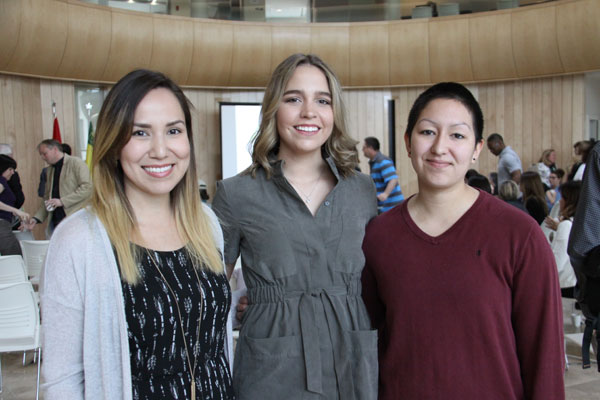U of S College of Arts and Science improving retention ASAP
- EFN Staff | May 20, 2017
The Gordon Oakes Red Bear Student Centre at the University of Saskatchewan was filled with students, dignitaries and the sound of Bob Badger drumming and singing. The gathering was to celebrate the fifth birthday of the Aboriginal Student Achievement Program (ASAP). Its focus on small class sizes, personal relationships and culturally informed instructors has made a huge difference on retention rates for first year students in the College of Arts and Science.
“I am so proud of the successes of ASAP students, which are also the successes of their families and communities,” said Kristina Bidwell, associate dean of Aboriginal affairs in the College of Arts and Science. “Building on these successes, our college is committed to improving and expanding ASAP so that it meets the needs and goals of Aboriginal students all the way to graduation. We have cut the drop out rate of first year students in half.”
Three students attested to the impact of ASAP on their schooling success. “I liked it so much I have come back to work as a student advisor now,” said Sociology student Ana Sylvestre. “I loved the small class sizes and the attendance program held us accountable. It was awesome and I wouldn’t have had success without it.”
Taylor Roufosse was initially intimidated with the size of the University, but ASAP had the answer to that. “Small class sizes made me so comfortable,” said Roufosse, also a Sociology student. “The professors truly care and want you to succeed. The support they gave me and skills go far beyond first year.”
When Jacqueline Nokusis enrolled in the College of Arts and Science in 2012, she wasn’t sure she was ready for university. Making the transition to student life from the working world while raising a child was difficult.
“There were definitely times when I wanted to quit,” said Nokusis, who is originally from the Peepeekisis First Nation.
But Nokusis was one of the first to join ASAP. Its focus on small class sizes, personal relationships and culturally informed instructors made a difference, she said.
“It connected me to students who had similar goals, who came from similar backgrounds and were facing some of the same challenges I was facing. And if it weren’t for those relationships, I don’t think I would have made it through my second year.”
Nokusis is graduating with her degree in microbiology and immunology this spring, and will be starting medical school in the fall to become a physician serving Indigenous communities.
Findings in the new report suggest the program is making a difference. Since its inception, 60 per cent of First Nations students in ASAP returned for their second year of study, compared to 46.5 per cent of First Nations students who did not join the program. For First Nations students—who make up almost all students in ASAP—this means the program cuts the retention gap in half.
The need to expand supports for Aboriginal students beyond their first year of study is what motivated the creation of the newly announced ASAP STEM Pathways, said Bidwell. Aboriginal students are under-represented in post-secondary STEM programs in Saskatchewan. Starting in fall 2017, the new pathways will provide access, entrance and enrichment programs for students interested in STEM degrees through all four years of their student careers.
“Our college and our university have made a commitment to be the best possible place we can be for Aboriginal students,” said Peta Bonham-Smith, dean of the College of Arts and Science. “We still have work to do, but ASAP gives us a proven model for moving forward with that promise.”
A total of 383 students have enrolled in ASAP since 2012, according to the five-year report. These students are more than twice as likely to seek out the campus resources they need compared to Aboriginal students outside of ASAP. Three-quarters of ASAP students reported a sense of belonging to the College of Arts & Science and the U of S.

